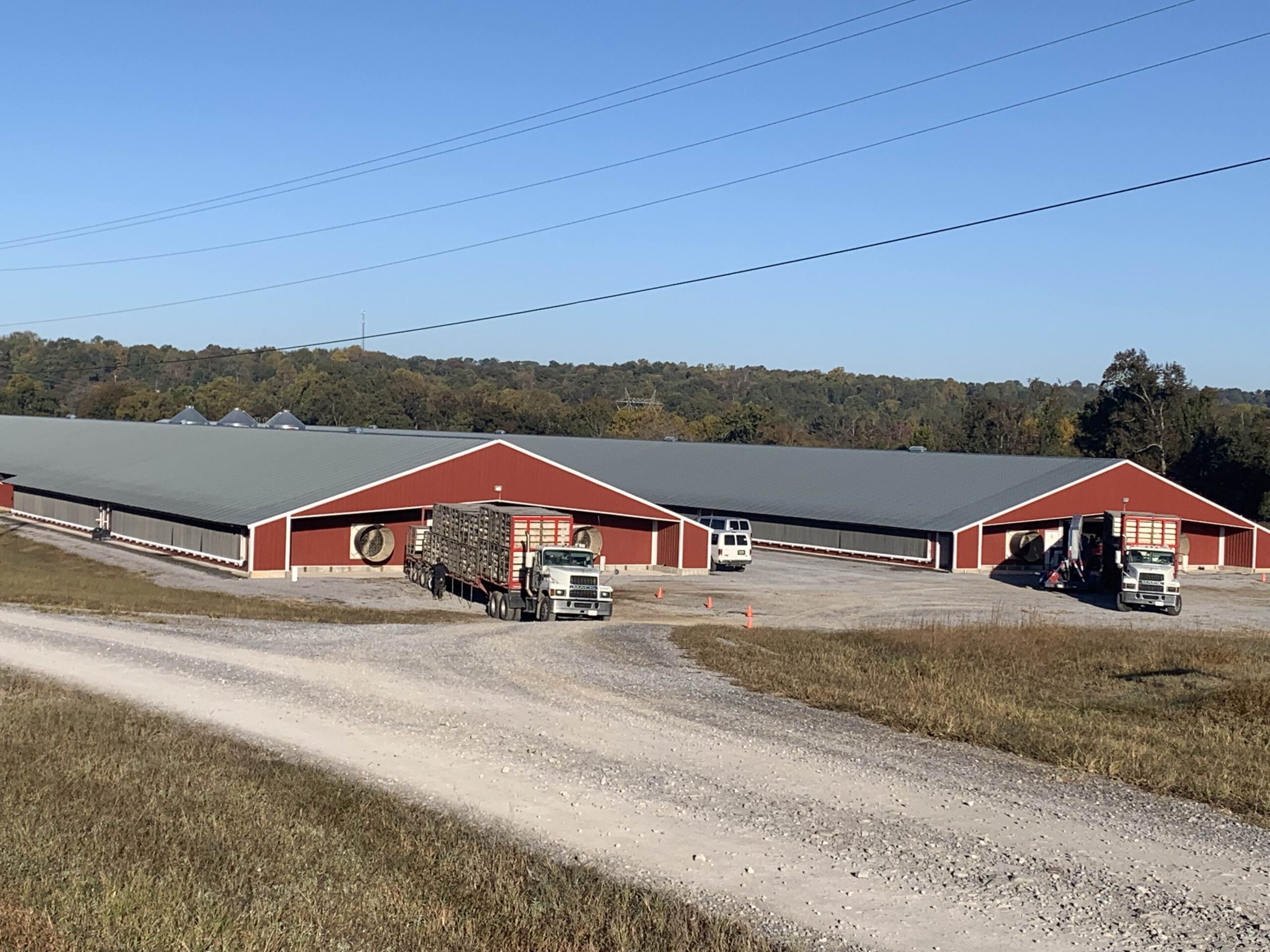Historically, commercial poultry grower loans have been considered by lending institutions to be among the lowest risk agricultural loans due to the secure nature of the grower’s contract with poultry companies. However, the increasing cost of new facilities in the last few years has quickly outpaced the average farmer’s ability to obtain new loans without financial support. For example, a typical broiler farm consisting of eight houses, 54 feet wide by 550 feet long each (237,600 square feet), can easily cost $22 per square foot or over $5,000,000. This cost does not include a land purchase. A traditional 20% equity requirement would mean approximately one million dollars of mortgageable equity or cash influx would be required to secure such a loan. Thus, most of these loans now go through some government funded, farm-oriented program that helps growers obtain loans.
For example, the USDA’s Farm Service Agency loan guarantee program can effectively cut the equity requirement in half. There are fees and qualification guidelines for these loan programs, and not all applicants are accepted. Equity is not the only problem. Interest rates have become a significant obstacle. The FSA restricts the interest rates charged by banks for their guaranteed loans to a maximum of the 5-year constant maturity treasury (CMT) rate plus 5.5%. Figure 1 illustrates the changes in this max rate since July 2022. According to farm financing institutions, loan rates for most growers in July of 2022 were averaging around 5%. Due to inflation and other uncertainties, as well as the rising CMT, the current average rate for poultry loans is now closer to 8%, with expectations of further increases by the Federal Reserve. A couple or three percentage points doesn’t sound like much, but in the case of these large loans over a typical 15-year term, it can mean an increase of 18-20% in annual payments, or over $100,000 per year.
At the same time, like all farmers, poultry growers are dealing with rising utility and labor costs. Higher loan payments combined with higher costs have a significant negative impact on the cash flow of new farms. Many potential new growers are unable to obtain funding at all due to the resulting low debt service margins. To help relieve the cash-flow pressure, many lending institutions have moved to offering 20-year terms on poultry loans. This decreases the annual payment but also increases the total interest paid over the term. If you combine increased interest rates with lengthier loan terms, the result has effectively doubled the overall cost of building a new farm from a year ago, making it extremely difficult for new growers.
To assist growers in securing the financing to build new housing, poultry companies are addressing farm cash-flow problems by supplying funding directly to the growers, either in the form of additional pay incentives over the loan period or in the form of up-front money used to pay down the initial loan, decreasing the equity required and the annual loan payment. These incentives have almost doubled over the last year due to the factors discussed (See Fig 2). Some obvious questions arise from the situation. For the industry, “How long can poultry companies continue to offer these increasing cash incentives before profitability begins to suffer?”, and for consumers, “At what point will housing difficulties impact supply, potentially increasing chicken prices?”
Fig 1: Farm Service Agency Guaranteed Loans Maximum Interest Rate

Applies to loans with fixed rates of 5 years or more. Actual lender rates may be less.
Fig 2: Comparing Cash Incentive Payments and Total Interest Cost for a New 8-house (54’x550’) Farm in 2022 and 2023 Resulting from Changes in Interest Rate and Loan Term



